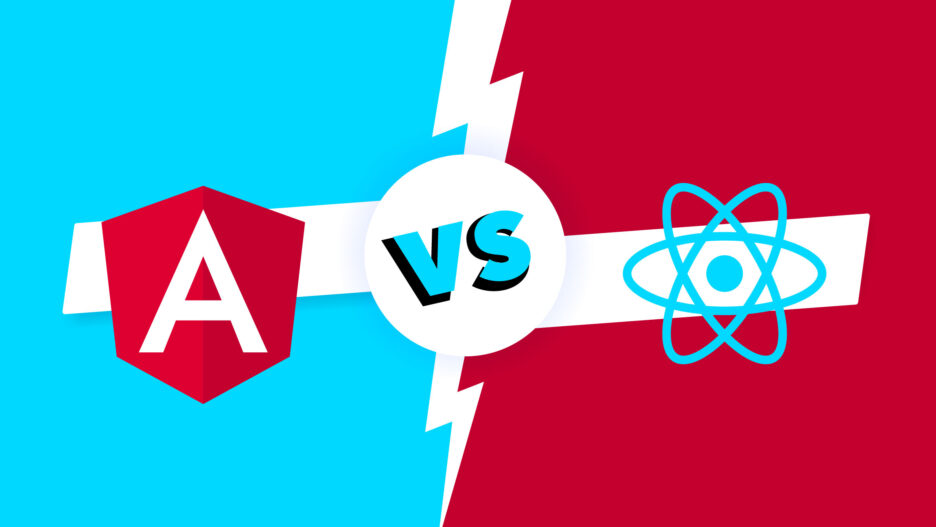The front end is where you meet your users for the first time. But if your website is slow or unappealing, your users won't wait around. And that’s just common sense; no one likes a slow website, especially Google or your customers.
Search engines like Google use aspects like page speed and website performance to decide where to rank it. If you fare well under this assessment, people will be more likely to find you.
Building a website has many steps and elements that can be put into different groups. The front-end and back-end are two of the most important ones. Under these groups, you’ll find different teams involved such as the virtual design team, quality assurance, project management, etc., all working collectively to finish the web project. Everyone’s goal is to make a website that is easy to use, works well, looks good, and that users can navigate without getting lost or making mistakes.
The front-end part of website development has the mission of creating the client-facing part of the website, i.e., the parts the user gets to see and interact with. This covers web design, buttons, headers, images, etc. The front-end developer's job is to put all the business data together and with logic to make it easier for the user or client to access all the company's back-end data. If the frontend does a good job at doing this, the user experience will be successful.
In this article, we will go over the value of frontend as exemplified by two of its main available tools: Angular vs React. Let’s get going!
Why Front-end Matters for Your Web Projects
It can be daunting to decide which JavaScript frameworks to use for your web development. Even more so when you have a lot of options that can meet the needs of the project. It’s essential to ensure your web project has a great front-end developer who can address the complexities of building an intuitive and responsive front end.
For instance, let’s go over the Facebook–Myspace case: Before Facebook existed, MySpace was the place where users could see updates about their friends, but the user interface was far from perfect. Once Facebook made its debut, with its top-quality design, accessibility, and logic, there was little to virtually no chance for the old-fashioned Myspace frontend to survive. As you know, Myspace became history, and now Facebook predominates.
But is there such a thing as a single best tool to develop a great frontend? JavaScript, not to be confused with Java, allows developers to create a system that will be easy to navigate and interact with, giving the site a great performance. Also, JavaScript provides features that other programming tools do not (such as HTML5). In addition, JavaScript has frameworks that help with the frontend's quick development, such as Ember, Backbone, Angular, and React.
Short Intro to React
React is an open-source JavaScript library that is used to build websites' front ends. In short, it is used to make user interfaces or parts of UIs. For developers, React is an all-in-one solution to build interactive and complex UIs because it is component-based and uses declarative language. React embodies the "earn once, write anywhere" mantra, meaning developers can create fast, scalable apps for any platform. Nowadays, Meta, Facebook’s parent company, is tasked with providing maintenance to React.
There are different kinds of components in React. A component takes in parameters called "props" (short for properties) and gives back a hierarchy of views to show using the render method. This method tells the computer what to show on the screen. There is also a developer tool extension for Chrome that works with React.
Short Intro to Angular
Angular is a development platform built on Typescript. It is a component-based framework for building scalable web apps with a collection of well-integrated libraries and features such as client-server communication, routing, and more.
Angular has a suite of developer tools to develop and scale projects from single-developer size to enterprise-grade applications. Moreover, it’s constantly updated technology with its latest developments led by the Angular team at Google.
In contrast with React, Angular is a platform and framework for building single-page client applications using HTML and Typescript instead of JavaScript. Angular implements core and optional functionality as a set of TypeScript libraries that you import into your applications.
The Angular framework's building blocks are Angular components organized into NgModules. NgModules collect related code into sets; an Angular application is defined by a set of NgModules. An application always has at least a road module that enables bootstrapping and typically has many more feature modules.
React.js vs. Angular.js: Making the Right Frontend Business Decision
The focus of our comparison is Angular vs. React. Those are popular and powerful tools that can be used to build almost any kind of front-end project you can think of. Both make it easier to make user interfaces for web projects that are both complex and in style.
With both tools, developers have a lot of room to be creative and try new things, so it’s a monumental decision to choose between the two as the project outcomes depend on the chosen front-end framework.
Choosing Frontend Solutions for Midsize Projects
The best choice for a small to midsize project might be React because of its simplicity and flexibility. React also offers excellent community support, so it's easier to learn how to program if you have a network of information. React also offers a good “size,” meaning its program is “lightweight”. React’s library is around 42 KB, vs. Angular’s library is heavyweight at 143 KB. React has been around longer (since 2013 vs. Angular’s first release in 2016), making it a more mature framework.
Still, Angular seems to be an extremely favorable alternative because it is a full-stack MVC framework that doesn't need any other libraries. React JS, on the other hand, needs extra libraries. Whether this is a good or bad thing depends entirely on what you want to do with your project.
All in all, it’s recommended that for a small, quick project, React is a good choice because it's easy to scale up and down, and it's a great choice for smaller projects because they can be launched quickly with little setup. Additionally, it’s easy, small, and simple to learn.
Choosing Frontend Solutions for Large Projects
Choosing Reactjs for your large projects:
- Unlike Angular, developers have to add outside entities to Reactjs to access certain functions and get fully interactive features.
- You need to use state containers like Redux, which make it easier to build scalable apps with dynamic elements and rendering management.
- JSX needs to be turned into JavaScript so that browsers can understand it.
- When code bundlers like web pack are needed.
- When you need to use a library like ReactRouter, which is a URL router.
Choosing Angular for your large projects:
- Angular is considered better than React if the app in question is enterprise-grade and you need to add complex features like progressive, single-page, and native web apps.
- In terms of how pages are rendered, Angular uses real DOM implementation, but has a unique way of detecting changes that work with zones to make web apps run faster.
- Angular is a full-fledged framework for building web apps for phones and computers, not just creating interactive user interface like Reactjs.
- Angular can handle many things on its own, without any help from outside.
Since Reactjs is easier to use, many favor it when starting from scratch on a complex user interface project. You can choose Angular if you have time for a longer learning curve, but Reactjs is the best choice if you want to learn faster. Angular is the whole package, with all of the most important features already built in. Its features can't be compared to just a React library, such as Reactjs. People who know Typescript shouldn't be afraid to use Angular, and they can move forward with the framework.
Bottom line, we can conclude that for large projects, Angular is a more well-rounded solution offering more capabilities and features fit for enterprise-grade projects. Angular is the best choice for a large-scale project. Angular exceeds React because it’s a full framework, vs. React is just a UI library (more suitable for a Single Page project). Angular is a bit more costly and time-consuming than others, but the web development will be top quality. The other downs-side of picking this tool is that not very many developers know how to use this tool, and learning is difficult, so it might be hard to find.
QA and Test Automation in React and Angular
Testing in a language that dynamically changes, like JavaScript, makes it easier to reach 100% testing goals. Because of this, JavaScript code needs to have a strong set of tests. Angular has a lot of features, such as isolating each unit of code, and it was written with testability in mind. For example, Angular's built-in dependency injection feature makes it easy to pass in components' dependencies and can also mock components.
When writing tests, it's best to mock the parts that don't already exist in the testing environments. Tests can look at how the other parts of the function work and guess how they will interact. It is the act of making fun of data or functions, and it can be used to keep data fetching from going wrong. Because of mocking functions, tests in Reactjs are very easy to plan for.
Angular has built-in features that make testing easier for developers. You can now separate the code before testing, and this feature is there to help you with application testing. Another element to consider is dependency injection makes it easier for two parts to work together and improves how they depend on each other. With Reactjs development services, developers can use the mocking feature to set up testing environments that are more ideal. It makes it easier or more predictable to test and makes it easier to get data.
All in all, when it comes to automating tests, there isn't much to choose between React vs Angular. That's because both Angular and React end up making HTML that can be parsed, queried, and checked.
Still, Angular might have a small edge. Angular components have their own element in the DOM, while React doesn't. So, with Angular, it's easier to use a CSS selector to find a certain component in the DOM: One can just use the tag name to choose a component.
Remember that React and Angular are pretty much the same when it comes to automating tests. The only difference is that Angular components show up as DOM elements, which makes it easy to select them with CSS selectors.
Which Is Better for Web Development, React or Angular?
Whether you have a small web project or a mid or large-scale one on the horizon for your organization, you should understand the options available to develop the best quality web project. Always consider that front-end development is crucial to the continued success of your company because it’s the first interaction with your users and potential clients.
React vs Angular are both great options, as described above; both are strong tools that will help you achieve your company web project goals. At Svitla Systems, we’ve helped numerous clients make the best decision for their web projects when choosing between Angular vs React. Our expertise stems from rich experience in both frameworks and diving deep into the unique requirements of each project to determine which option works best.
If you’d like to take your front-end development to the next level with experts in Angular and/or React, and plenty of other frameworks, reach out to us so we can help you every step of the way.





![[Blog cover] SEO optimization best practices](https://svitla.com/wp-content/uploads/2025/05/Blog-cover-SEO-optimization-best-practices-560x310.jpg)